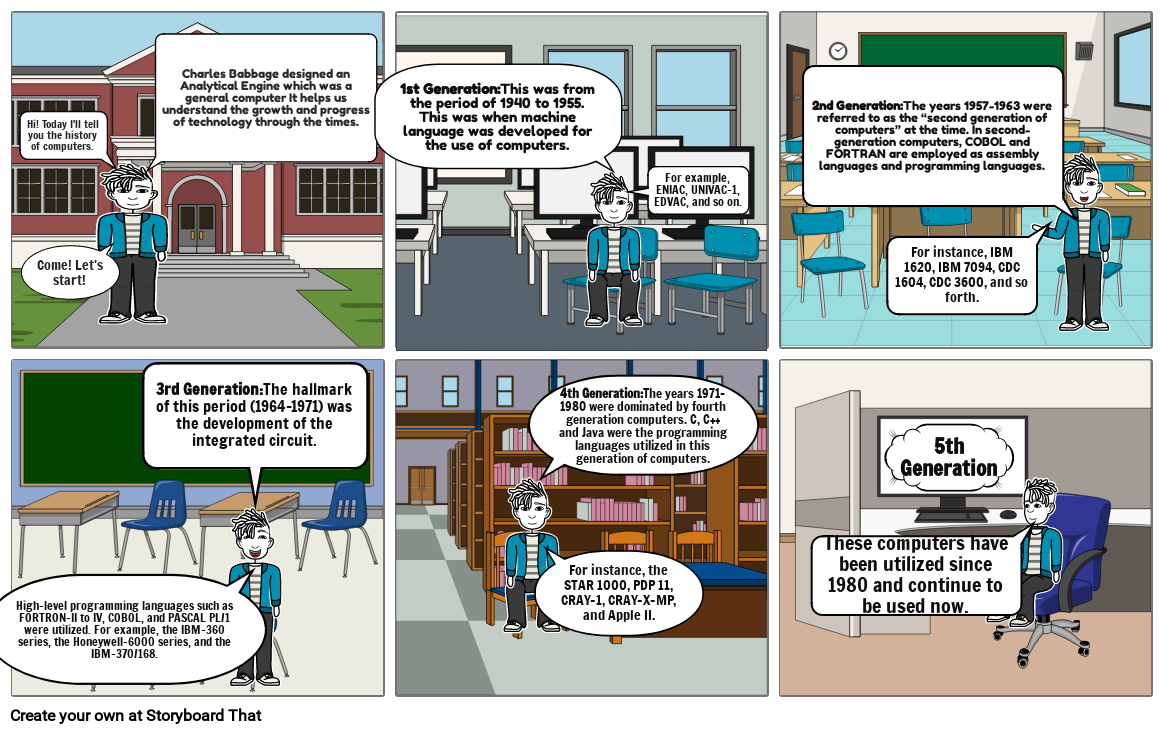History of Computer

स्टोरीबोर्ड पाठ
- Hi! Today I'll tell you the history of computers.
- Come! Let's start!
- Charles Babbage designed an Analytical Engine which was a general computer It helps us understand the growth and progress of technology through the times.
- 1st Generation:This was from the period of 1940 to 1955. This was when machine language was developed for the use of computers.
- For example, ENIAC, UNIVAC-1, EDVAC, and so on.
- 2nd Generation:The years 1957-1963 were referred to as the “second generation of computers” at the time. In second-generation computers, COBOL and FORTRAN are employed as assembly languages and programming languages.
- For instance, IBM 1620, IBM 7094, CDC 1604, CDC 3600, and so forth.
- High-level programming languages such as FORTRON-II to IV, COBOL, and PASCAL PL/1 were utilized. For example, the IBM-360 series, the Honeywell-6000 series, and the IBM-370/168.
- 3rd Generation:The hallmark of this period (1964-1971) was the development of the integrated circuit.
- 4th Generation:The years 1971-1980 were dominated by fourth generation computers. C, C++ and Java were the programming languages utilized in this generation of computers.
- For instance, the STAR 1000, PDP 11, CRAY-1, CRAY-X-MP, and Apple II.
- These computers have been utilized since 1980 and continue to be used now.
- 5th Generation
30 मिलियन से अधिक स्टोरीबोर्ड बनाए गए

